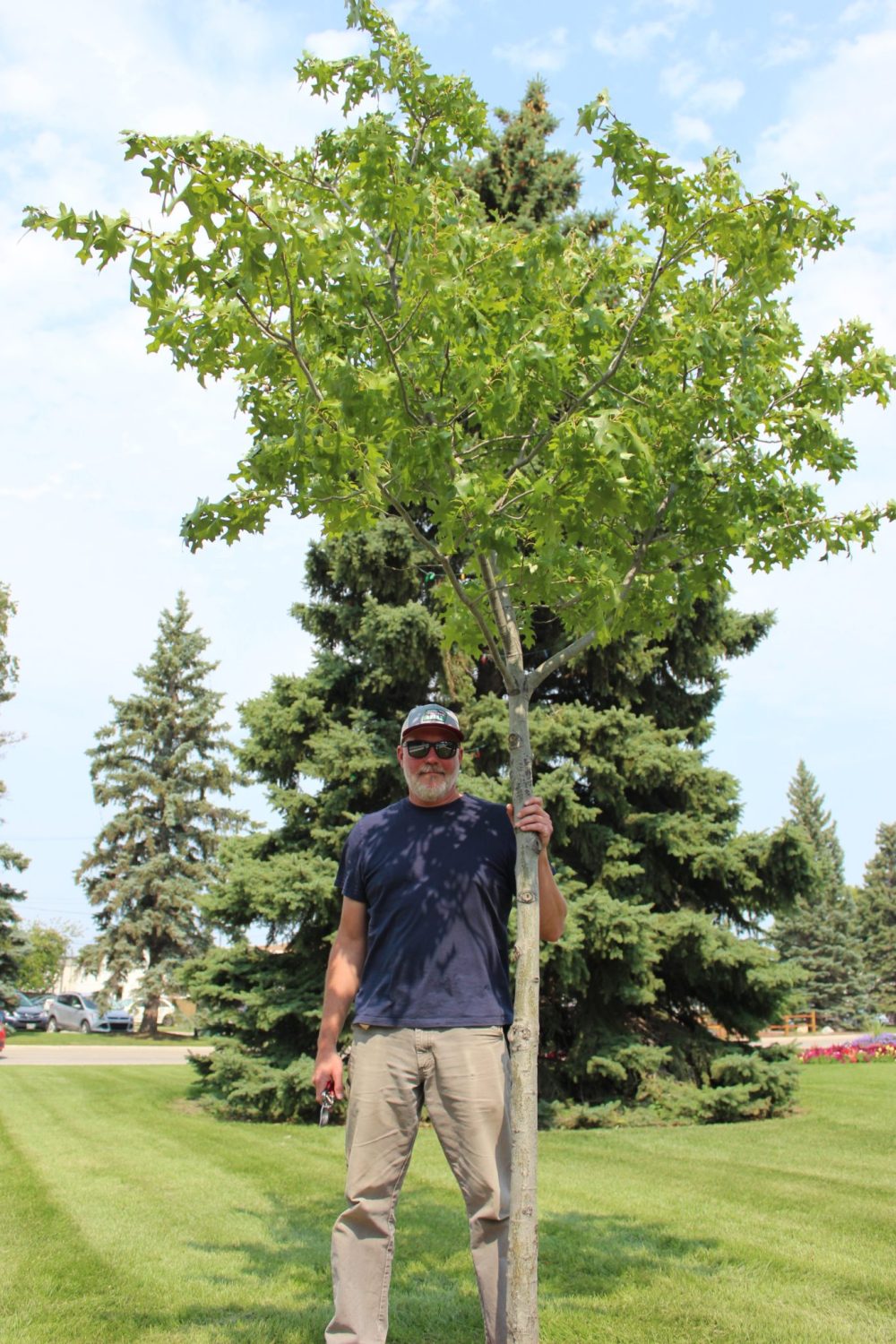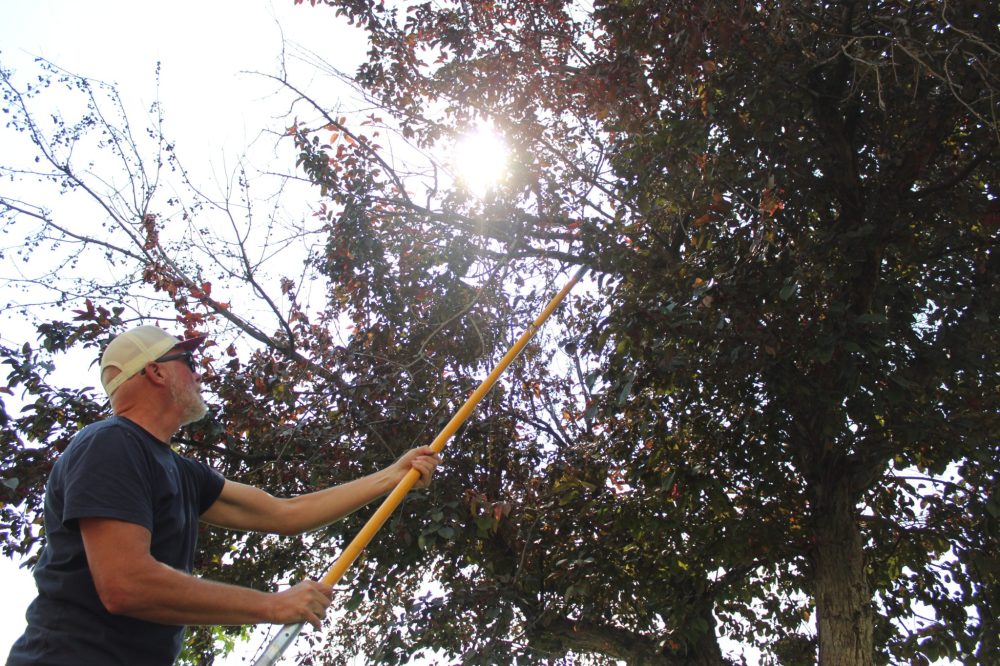The trees are alright
Advertisement
Hey there, time traveller!
This article was published 25/08/2023 (669 days ago), so information in it may no longer be current.
Steinbach arborist Chris Freund is busy, but the good kind of busy.
As he plants trees across the city’s new parks and developments, and spruces up the spruces in more established areas, Freund is keeping an eye open for some major threats to the urban forest.
The big one right now is emerald ash borer.

“Ash was a species that was planted by the hundreds. And with that threat, many jurisdictions are no longer planting ash trees because they’re over-represented in the urban forest, largely,” said Freund while sitting under the Manitoba maples beside the Jake Epp Library.
This switch has caused a bit of a shortage of ready-to-plant trees.
“And I think the nurseries were probably heavily invested in them, so now they’ve just got to catch up. Just like anywhere else with consumer trends, except with trees you’re looking at a seven-eight year cycle, right? So it’s a little tougher to react,” explained Freund, who himself worked on his parents’ Christmas tree farm south of Steinbach as a teenager.
The insect has not arrived in Steinbach traps yet. Freund said the borer is particularly nasty because it is hard to detect, with ash trees taking four or five years to die as the bug spreads.
“But once the numbers come up, then they work quickly. They just destroy entire populations. I mean northern U.S., millions of trees,” said Freund.
There are still other challenges, including the endemic Dutch Elm Disease (DED).
“Last year the numbers were down. There was some speculation that something to do with the weather might have slowed the way that DED symptoms presented,” said Freund.
He said since 1990, Steinbach averages about 170 Elm trees affected per year, though that number was growing until last year, which saw 125.
“Previous years were up around 300, so I anticipate something a little closer to that next year,” said Freund.
Provincial workers fans out across the province to find infections and infestations. When a tree needs removing, that is where contractors or municipal workers like Freund and his team step in.
Another job of his is to give input on big developments in Steinbach like a new residential neighbourhood, or the new Southeast Event Centre.

“Those conversations were pretty ongoing. In the grand scheme of things this is the building and this is where it needs to go, but we put a lot of effort into saving as many trees as we could,” said Freund.
“Especially around approaches (entrances) where we thought, you know, this is tight but let’s try.”
The arborist was busy this summer planting in the Crescentwood area where many new families have moved into the southwest end of the city, with that his top priority as fall approaches. An important strategy to avoid pest and disease spread, and to avoid big gaps when one of those problems inevitably come Steinbach’s way, is to focus on planting a variety of species.
While hardy hardwoods are preferred for the boulevards, anything suited to the climate can go in parkland – save for the suffering ash trees.
“Couple different varieties of oak, couple varieties of spruce (Black Hills and Colorado blue), two types of pine (Ponderosa and Scots)… some birch, and there might be others, too,” said Freund.
He said it was imperative to have both deciduous and needled trees, at about a 30-10 ratio for Crescentwood.
As for how many trees there are in the city, Freund and his team have been counting for a few years now and will continue until they have each of the thousands on public land inventoried. It is a process that includes GPS coordinates, height, diameter, species, and any potential deficiencies or damage.
